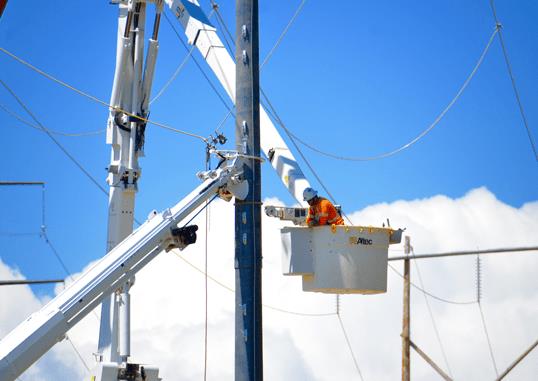
The industry that supplies composite utility poles has undergone a similar technical evolution to what was seen for composite insulators. As with this latest insulator technology, performance of first generation composite utility poles did not always measure up to expectations and left some customers with legitimate concerns about continued use. This triggered a review of problems among suppliers as well as efforts to overcome these.
In the case of composite poles, among the key issues going back to the time they were first developed has been degradation from continuous exposure to combinations of UV and moisture. Galen Fecht, Technical Service and International Sales Director at Ontario-based RS Technologies, explains that the service life of fiber-reinforced polymer (FRP) materials is governed by their ability to resist such exposure and that this depends largely on resin formulation.
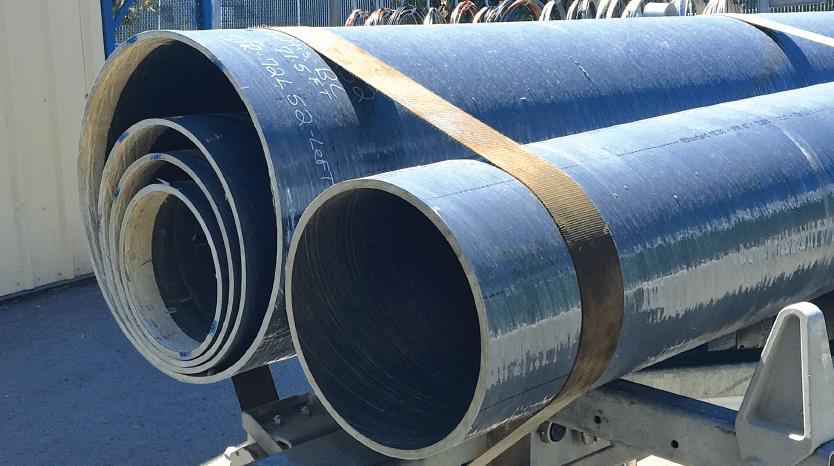
As with the rods and tubes used as the structural elements in composite insulators, FRP poles are made from glass fibers, which provide the strength, and also a resin that bind the fibers into a matrix. Typically, most pole manufacturers have now come to rely only on E-glass fibers due to the best combination of desired electrical and structural characteristics. Resins include polyester, vinyl ester and polyurethane types.
Fecht advises that, while polyester and vinyl ester resins are both workable and stable materials, they are not ideal for incorporating UV stabilizers into their composition. The reason, he says, is a phenomenon termed ‘fiber blooming’, whereby progressive environmental degradation of these resins can cause glass fibers to eventually protrude from the material. To overcome this problem, some manufacturers add a special ‘veil’ cloth in a secondary manufacturing operation while others apply a protective layer of paint. Fecht claims that the superior solution is to rely only on polyurethane resin that he says resists voids and more easily accepts UV stabilizers into its formulation.
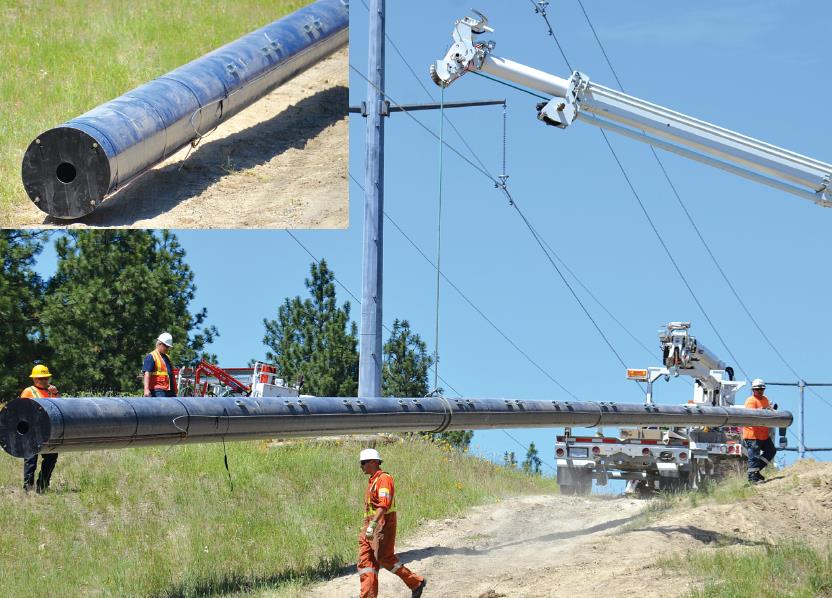
A composite utility pole of up to 170 ft. (over 50 m) in height is typically made of modular sections, each produced by winding resin impregnated strands of fiberglass onto a steel mandrel – basically the same process used in manufacturing composite tubes for hollow core insulators. As with tubes, winding of each module is optimized by varying parameters such as tensioning of fibers, winding angles and wet-out process. The respective diameters of the modules used for a pole will determine its structural strength.
One of the main considerations for any power utility that looks at the economic life of an overhead line is how many years of service composite poles will provide compared to well-known alternatives such as wood, steel or concrete. According to Fecht, accelerated aging tests using methodologies in the ASTM G154 standard offer a default UV test for polymeric materials but do not specify minimum duration of exposure. To meet customer requirements, he says that his firm has conducted extensive accelerated aging tests and results confirm a minimum pole life of 65 years and possibly as long as 125 years. He settles on a figure of 80 years as a reasonable expectation of effective service life, with no scheduled maintenance required over that period.
In terms of inspection, utilities have plenty of experience with structures made of materials such as wood and there are long-established test protocols and criteria that dictate if and when replacement is warranted. New users of composite poles therefore have to move through a learning curve on what special procedures will have to be applied to such structures at the time of scheduled line inspections.
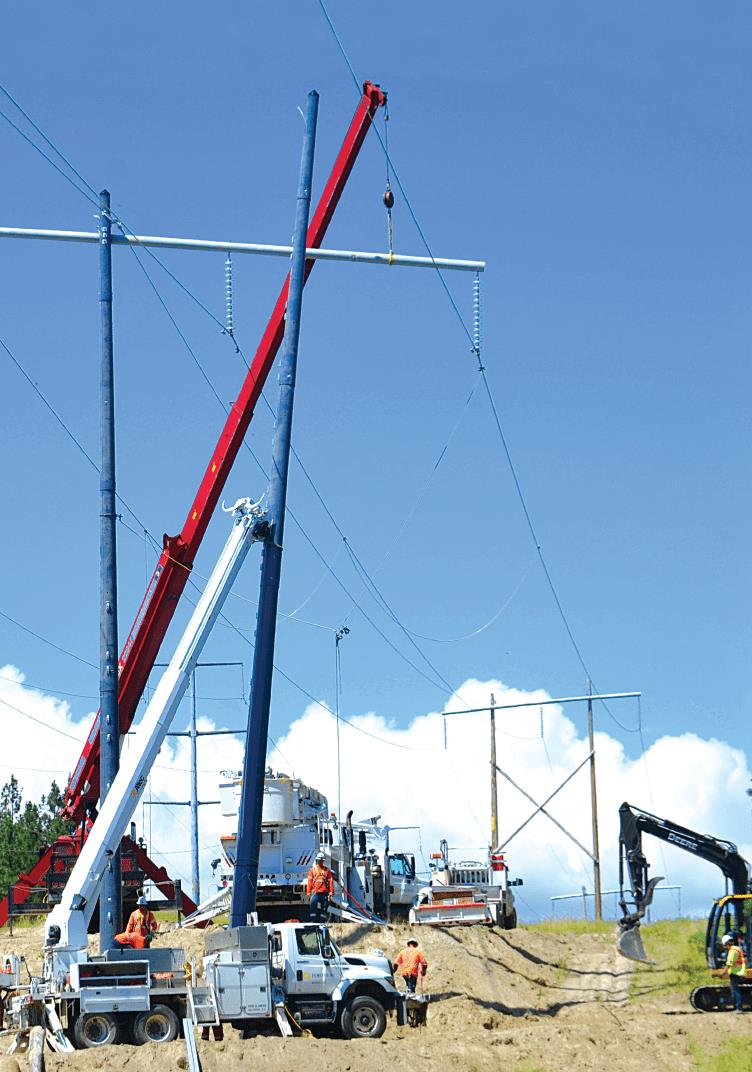
Fecht explains that there are typically never any problems that occur below grade on a polyurethane FRP pole since this section is not subject to degradation from UV. Above grade, he recommends that all bolted connections be verified to ensure that recommended loads are not exceeded to avoid laminate damage. Also, slip joints of each module have to be examined to ensure they are tight and that the metal fasteners were properly installed when the pole was first assembled. A simple visual examination ensures that no portion of the slot is visible below the bolt head.
Fecht also recommends checking for signs of damage such as cracking or impact on the first one or two meters above ground. Suppliers typically offer a damage assessment schedule that advises users what to do in cases such as minor scratches, where only application of a polyurethane paint is needed. Deep damage, by contrast, may present a structural concern and is best treated by means of special patches or, alternatively, replacement of the affected pole module.
Finally, Fecht points out that, as with polymeric insulators, it is also advisable to monitor the hydrophobicity of a composite pole, which ideally should remain the same classification as when it was new, over its entire service life. The STRI hydrophobicity guide serves well for this purpose. The value of maintaining good hydrophobic properties, he states, relates to improved self-cleaning from road salt or other contaminants.
Apart from inspection protocols, another question mark for new users of composite poles is how these can best be climbed whenever there is a need for maintenance of line hardware and components. Here, Fecht notes that because composite poles are different to wood, different climbing techniques are advisable and these involve either steps or ladders. For example, he says that Ontario’s largest electric utility requested access steps be inserted into each composite pole installed onto their transmission network. To better respond to such requests in remote areas which cannot be accessed by a bucket, Fecht reports that his firm routinely pre-drills holes at strategic locations starting at about 3 m in height and then plugs these until such time as they may be needed for inserting steps.
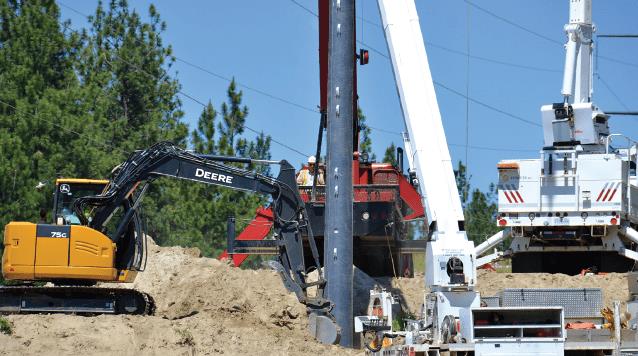
In terms of demand, Fecht acknowledges that, while growing in sales, composite transmission and distribution structures still account for only a sliver of the global market. So what factors are driving more and more power system operators to look at this technology? Here, he mentions a variety of scenarios that will make a utility consider switching to composite poles for a particular line application. One is where existing poles are not lasting as long as first expected. In the case of wood poles this can be due to attack by woodpeckers while for steel or reinforced concrete the problem could be aggressive corrosion due to road salt, pollution or highly acidic soil. The second is where installation costs are unusually high due to remote sites where there are no access roads or where these have to be specially built. In this latter case, the savings on transport and installation costs of much lighter composite poles, even by helicopter, help compensate for their higher acquisition cost.
Source: http://www.inmr.com/composite-power-line-poles-growing-world-demand/